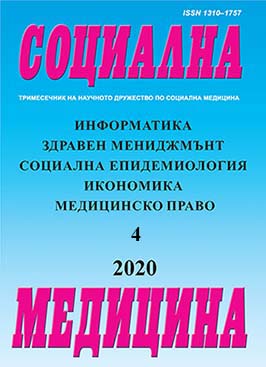Еволюция на артериалните хипертонии у децата през 25 -годишен период на проследаване
Evolution of arterial hypertensions in children over a 25-year follow-up period
Author(s): Rumyana Rahneva, Elena ShipkovenskaSubject(s): Social Sciences, Sociology, Health and medicine and law
Published by: Издателство на Медицински университет “Проф. д-р П. Стоянов“ - Варна
Keywords: arterial hypertension; children, prospective; follow-up study
Summary/Abstract: The purpose of the study is to follow the evolution of primary arterial hypertension (PAH) established in childhood in a 25-year period until adulthood and to shed light on 3 questions: dynamics of arterial pressure; changes in target organs; role of some main risk factors for the development of arterial hypertension. Material and methods: A prospective epidemiological study was conducted. The individual empirical information was collected in three consequtevie periods - in 1972-1973, 1982-1983 and 1997-1998. During the first stage, a cardiological screening and interview was conducted for 11,095 children aged 6-15, /a representative sample of the children living in the city of Sofia/. During the second stage, the evolution of PAH was followed in all children who showed increased arterial pressure in the first study. During the third stage /at the 25th year of the follow-up/, all persons with hypertension, established in the previous stages, who responded to the invitation (60.1%) were included. The examination was conducted according to a standard protocol: interview, physical examination, ECG, echocardiogram, biochemical analysis, fundoscopy. Statistical analysis includes: analysis of variance, correlation, t-test, Chi-square test, logistic regression analysis. Results: In the 11,095 children screened, aged 6-15, the following was found: arterial hypertension in 765 children - 6.89%; children with borderline hypertonia - 894 /8.06%/ and a group of hyperactive children - 1365 /12.33%/. All children from the three groups are practically healthy, with minimal vegetative dystonic complaints: irritability, headache, sweating, abdominal pain, poor sleep, etc. In the second study, a trend of retention of hypertension after 10 years was found in 111 persons with arterial hypertension registered during the screening, in 75 persons - with borderline values of arterial pressure and in 65 persons from the group of hyperactive children and normotonics, i.e. at the 10th year of follow-up, a total of 251 individuals remained with proven AH. When comparing the electrocardiographic, X-ray and the echocardiographic examination of the 10th year it was found that the echocardiographic examination has the greatest informativeness for early changes in the cardiovascular system. At the 25th year of follow-up, a high relative share of boys who retained high blood pressure values in adulthood (78.70%) was noted, compared to girls - (46.00%). Left ventricular hypertrophy (LVH) was found in 59.34% of respondents; angioret- inopathy I and II degree in 37.77%; elevated cholesterol level (≥ 6.20 mmol/l) – 38.61%; reduced levels of HDL-cholesterol (≤ 1.00 mmоl/l) – 26.26%; elevated triglyceride levels (≥ 2.3 mmol/l) in 12.12%. The results of the multivariate logistic re- gression analysis performed to assess the risk factors for the maintenance of AH showed that hypertension is more common with a combination of the risk factors: family history of hypertension, male gender, obesity and increased salt intake (RR = 11.38; 95% CI 1.26 - 22.89). Conclusion: PAH established in childhood persists in the following years of life until adulthood in one third of cases, with a slow course and progressive development of changes in the target organs. Main risk factors for the retention of AH are: family burden of AH, male gender, obesity and increased salt intake. These data indicate the need for strict control of body mass and nutrition in children with PAH who are offspring of hypertensive parents
Journal: Социална медицина
- Issue Year: 28/2020
- Issue No: 4
- Page Range: 21-26
- Page Count: 6
- Language: Bulgarian

